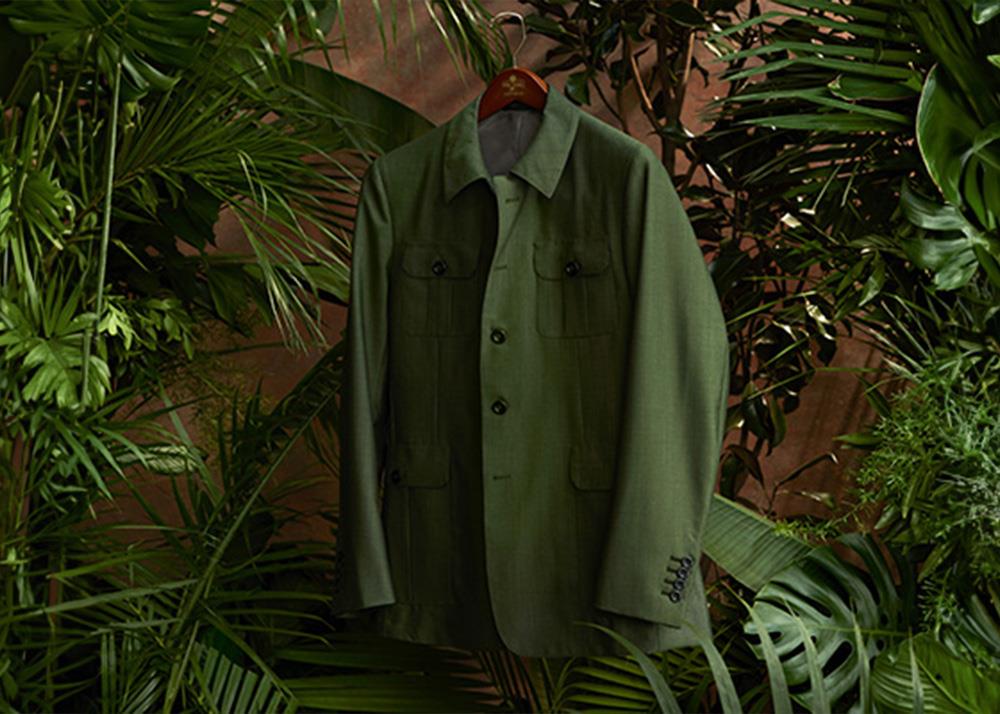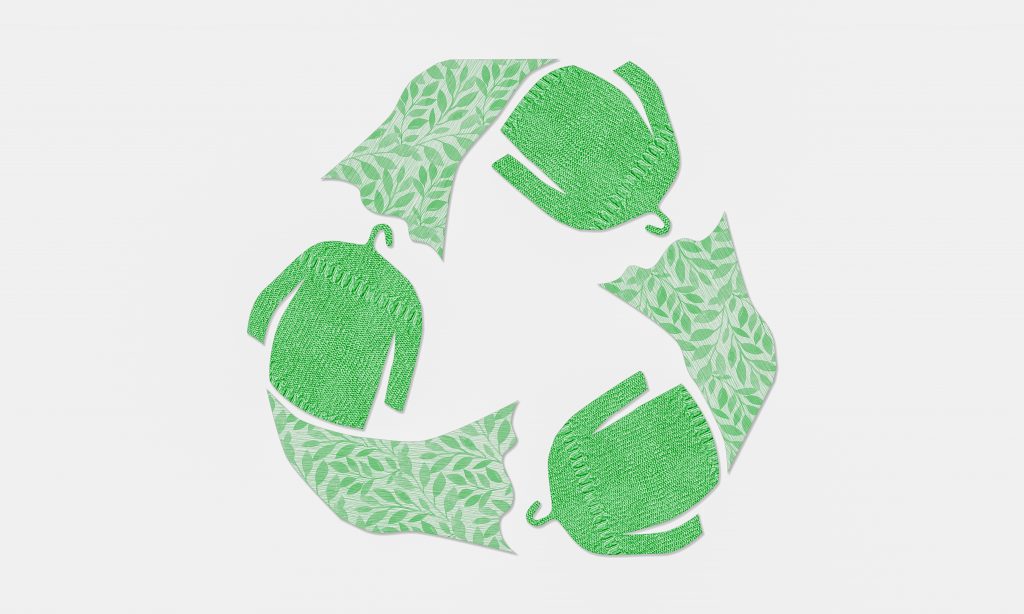Cape Town Sustainable Fashion: Environmentally Friendly Trends to See
Stay Ahead of the Contour by Checking Out Innovative Style Trends
In an industry as vibrant as fashion, staying in advance involves more than simply adhering to existing fads-- it requires an expedition of innovation. Smart textiles, for instance, are transforming garments into useful work of arts, while 3D printing is transforming style processes with its customizable, waste-reducing abilities. As sustainability comes to be a foundation, innovations like environmentally friendly materials and circular style practices are improving ecological duty - Cape Town Sustainable Fashion. Moreover, the merging of technology and style heralds a brand-new period of consumer involvement. Just how, after that, can these arising fads redefine the future of fashion, and what effects do they hold for brand names looking for to thrive in this progressing landscape?

Welcoming Smart Textiles
Recently, the apparel industry has actually witnessed a transformative shift with the integration of smart textiles, an innovative development that blends technology with material. This development stands for not just a combination of visual appeals and capability yet also a substantial leap in the direction of sustainability and personalization in vogue. Smart fabrics, likewise known as e-textiles, installed sophisticated electronic devices such as sensing units and conductive strings within the textile, allowing garments to interact with the user or the atmosphere.
These textiles are created to keep track of physical criteria, such as heart price or body temperature level, offering real-time health and wellness analytics. Past health and wellness applications, clever fabrics are likewise being used for adaptive garments, which can alter color or pattern in reaction to ecological stimuli, hence offering a vibrant fashion experience.
Furthermore, the advancement of energy-harvesting textiles that create power from motion or sunlight is leading the method for self-sufficient wearable modern technology. This development is attracting eco conscious customers and designers intending to minimize the eco-friendly footprint of style. As study and advancement in this field advance, wise textiles are expected to end up being increasingly prevalent, reshaping the landscape of contemporary fashion with their multifunctional capabilities.
The Increase of 3D Printing
Transforming the production landscape, 3D printing has emerged as a game-changer in the style industry. This cutting-edge modern technology has made it possible for developers to push the boundaries of creativity, generating intricate and tailored garments that were formerly unthinkable. By leveraging electronic design and additive production, 3D printing helps with the development of complicated geometries and patterns, enabling designers to try out brand-new structures and structures.
A remarkable advantage of 3D printing in vogue is its capacity to generate on-demand, minimizing waste and decreasing supply demands. This effectiveness not just maximizes manufacturing procedures yet also permits fast prototyping, making it possible for developers to bring their visions to life in a much shorter timeframe. Moreover, 3D printing sustains modification somewhat unparalleled by traditional methods, offering tailored fits and special layouts customized to specific customer choices.
The increase of 3D printing has also equalized style, making it accessible to arising developers who can currently make high-quality items without considerable economic investment in standard manufacturing facilities. As innovation remains to breakthrough, the fashion market is positioned to harness the complete capacity of 3D printing, discovering new materials and strategies that will undoubtedly redefine exactly how style is developed and created.
Sustainable Style Advancements
As the garment industry faces journalism requirement for environmental responsibility, sustainable fashion developments have actually arised at the center of transformative change. The expanding recognition of environmental impact has actually sustained a shift towards even more eco-conscious techniques and materials. Brands and developers are now focusing on sustainability, incorporating approaches that decrease waste and lower carbon impacts.
One substantial growth is the increase of round fashion, which stresses recycling and upcycling to extend the lifecycle of garments. This approach not just reduces waste however also urges customers to embrace an extra mindful approach to clothes intake.
An additional development lies in the fostering of innovative dyeing techniques that make use of natural dyes or waterless procedures, thereby reducing the huge quantities of water and chemicals traditionally made use of in fabric dyeing. In addition, improvements in biotechnology have caused the development of lab-grown natural leather and materials, supplying eco pleasant and cruelty-free alternatives to standard materials. Via these pioneering efforts, the fashion business is making purposeful strides towards a fantastic read a much more sustainable future.

Tech-Integrated Clothing
Tech-integrated apparel stands for a groundbreaking blend of fashion and technology, reshaping exactly how individuals connect with their clothes. This cutting-edge domain is noted by the inclusion of smart fabrics and ingrained digital parts, enhancing both capability and visual allure. From health and fitness trackers installed in sportswear to heated coats regulated via mobile phone applications, tech-integrated apparel provides consumers extraordinary benefit and versatility.
Introducing brand names are driving this pattern, concentrating on creating garments that reply to environmental stimulations or user commands. For circumstances, some garments can transform shade or pattern in action to temperature changes, while others integrate biometric sensing units to monitor health metrics like heart price or anxiety degrees. The seamless combination of innovation right into textiles also includes ecological sustainability, with efforts to establish self-cleaning materials or garments that get used to weather problems, therefore decreasing the need for several layers.
In addition, the development of wearable modern technology is not simply restricted to clothing however extends to devices like watches and glasses, additional broadening the range of tech-integrated style. As the industry proceeds to introduce, the potential for customization and personalization in apparel expands, offering consumers unique, tech-enhanced style experiences that accommodate their individual requirements and choices.
Future of Virtual Style
Over the last few years, the future of digital fashion has arised as a transformative pressure within the industry, leveraging advancements in electronic technology to redefine exactly how style is produced, experienced, and consumed. By incorporating augmented fact (AR), virtual reality (VR), and 3D style devices, developers can now craft interactive and immersive experiences that go beyond standard style limits. Online style enables for the creation of garments that exist exclusively in electronic environments, supplying unlimited possibilities for innovation without the limitations of physical manufacturing.
This electronic change not just provides opportunities for innovative expression yet additionally addresses sustainability concerns integral in standard fashion practices. Cape Town Sustainable Fashion. By eliminating the requirement for physical sources, virtual style minimizes waste and lessens carbon impacts. Additionally, the surge of virtual fashion aligns Read Full Report with the increasing consumer demand for special investigate this site and customized experiences, as digital garments can be personalized and tailored to individual choices with convenience

Verdict
The style market's future depend on the assimilation of cutting-edge technologies and lasting practices - Cape Town Sustainable Fashion. Smart textiles and tech-integrated clothing are boosting functionality, while 3D printing supplies possibilities for modification and waste reduction. Sustainable style, with round strategies and environment-friendly products, demonstrates a dedication to ecological stewardship. Additionally, virtual fashion is poised to redefine customer interactions. Adapting to these fads is important for brand names looking for to continue to be competitive and pertinent in this rapidly developing landscape.
In recent years, the fashion sector has actually witnessed a transformative change with the integration of clever fabrics, a sophisticated technology that blends modern technology with fabric.As the fashion sector grapples with the pushing need for environmental responsibility, lasting fashion advancements have actually arised at the forefront of transformative modification.In current years, the future of virtual fashion has emerged as a transformative pressure within the sector, leveraging improvements in electronic innovation to redefine just how style is produced, experienced, and eaten. The rise of online style straightens with the boosting consumer demand for customized and special experiences, as virtual garments can be tailored and customized to private preferences with simplicity.
The fashion sector's future lies in the combination of ingenious technologies and lasting methods.